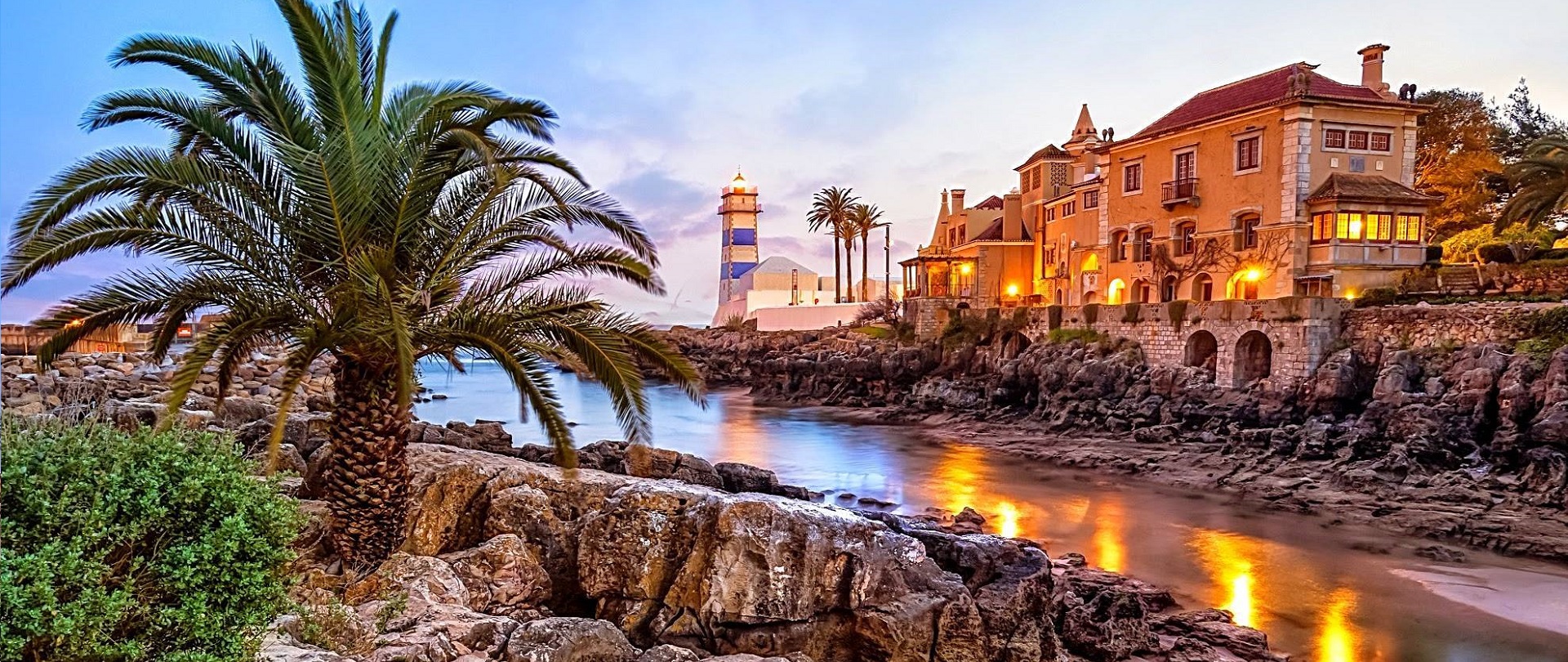What to visit in Sintra
We know that the visit to Sintra is indispensable for those who visit Portugal, especially for those who stay in Lisbon, Sintra is only thirty minutes from Lisbon by car, something like 2o kilometers. Many ways to get to Sintra, by train, by bus, in this article we want to suggest what to visit in Sintra.
A difficult choice for sure, but we want to help in this hard decision.
Pena Palace
Built in the 19th century. In the 19th century, in one of the highest points of Sintra, in the ruins of the Manueline Convent destroyed with the famous earthquake of 1755, the palace has two winged wings, the old convent and the most modern class of the century. The 19th century was designed by Baron Eschwege, both surrounded by a third architectural structure, in which an imaginary castle of paths with rounds with merlons and battlements, watchtowers, and even an access tunnel with a drawbridge were fancy.
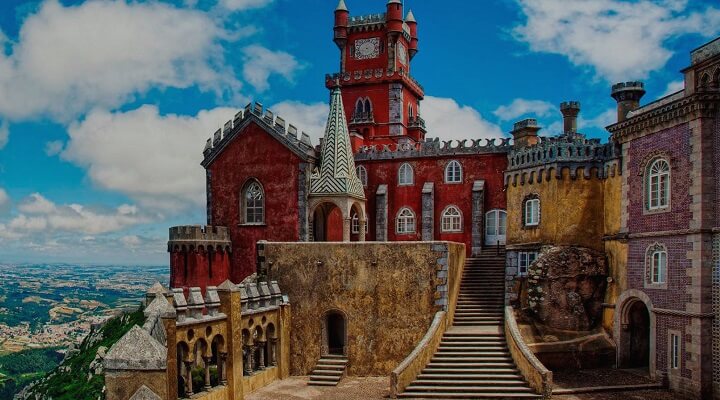
The influence of German romanticism is all too evident, perhaps inspired by the castles on the Rhine of Stolzenfels and Rheinstein, D. Fernando, the Portuguese king who ordered him to be built, ordered the Park of Pena to be planted around the Palace in the manner of the romantic gardens, with fascinating winding paths, pavilions and stone benches punctuating the paths, with plants and trees of the Whole World that the humid climate of the Sintra mountains ended up favoring.
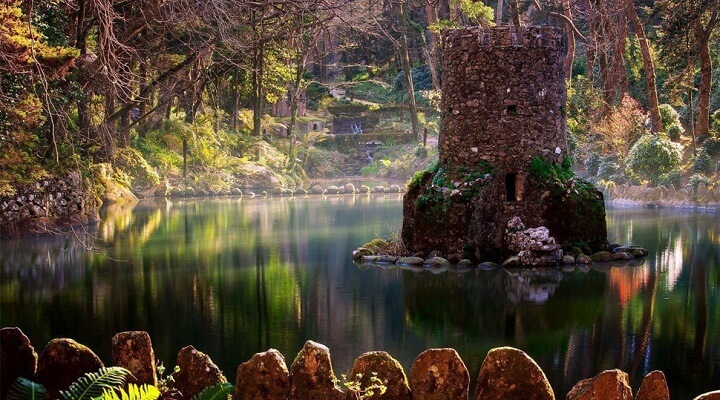
Quinta da Regaleira
Quinta da Regaleira is undoubtedly one of the surprising places to visit in Sintra, reports tell us that even when visiting every day, you will always discover something new, due to the mysteries and magic that this property brings us. Built between the end of the century and the XIX and beginning of the 20th century the Quinta da Regaleira materializes the scenario of an initiatory journey, a symbolic garden with references to Greek Mythology, Olympus, Virgil, Dante, Milton, Camões, the Templar mission of the Order of Christ, to great mystics and thaumaturges, to the enigmas of the Royal Art, to the Great Alchemical Work.
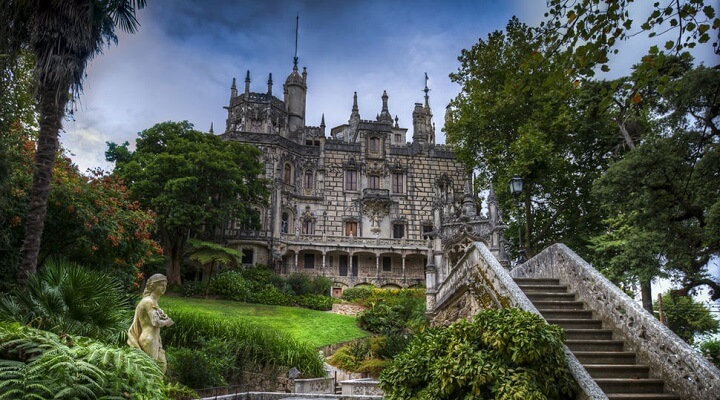
Perhaps the highlight of the visit to Quinta da Regaleira will be its initiatory well, an inverted tower that sinks for about 27 meters into the earth, with access through nine flights of spiral staircases, space of consecration, hermetic and alchemical, where the relationship between Earth and Heaven, life and death intensifies.
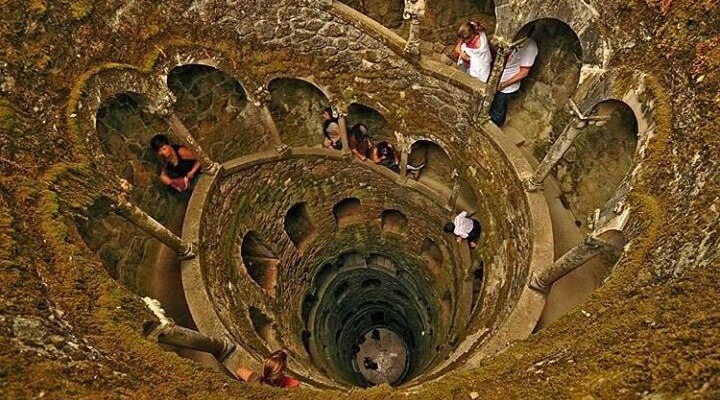
Moorish Castle
The most ancient monument, if you can call it Sintra, Castle of the Moors, better known as the Castle of Sintra is another vestige of the Arab period in Portugal, built in the 10th century, with two waists of walls that surround it of irregular shape and granite blocks of the same mountain, between rocks and on steep cliffs. A Castle to be visited by those who have no problems locomotion.
From the Castle we have a unique landscape with the village of Sintra, the Palace of the Village of Sintra, the Palace of Pena and the mountains and beyond, the extensive plain to the north and the Atlantic Ocean.
Monserrate Palace
The palace of Monserrat was initially designed by both father and son under the command of Sir Francis Cook, built in 1858, “taking advantage” of the microclimate of Sintra, in its gardens with more than 3,000 exotic species that dazzle that it visits until today. of the best places to visit in Sintra, because unlike all other Monserrate palaces is more comfortable because they have fewer visitors.
Monserrate was the summer residence of the Cook family, built on the ruins of the neo-Gothic mansion built by the English merchant Gerard de Visme, later William Beckford rented the estate in 1793, performing works in the palace, beginning to create a landscaped garden, a exemplary example of Portuguese Romanticism.
Of the most caricature was to have been visited by Lord Byron, Anglo-Scottish poet and figure tier of the Romantic Movement who was there in 1809 and sang his beauty in the poem “Childe Harold’s Pilgrimage”.
